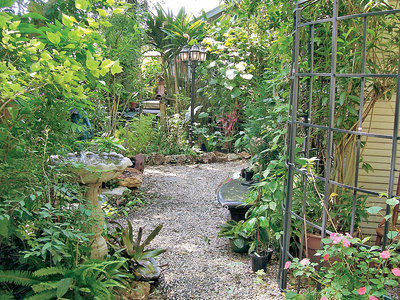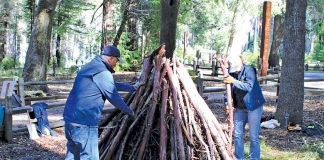
Most people want to do the right thing, they just don’t always know what it is — in the garden, anyway.
Often, when I visit a garden, I find lots of great plants scattered about that just need to find the right spot to call home, as well as something to tie them together.
The scattering is easy to do over the years. We buy plants we simply must have with no plan of where they might be used effectively. The garden becomes a collection of mismatched plants with a vision that just doesn’t come together.
Where to begin? Picture sections of the garden as separate scenes composed of small groups of plants that look good together because of their complementary and contrasting features.
Start with a strong foliage plant and add other plants with interesting textures, forms and colors to complete the scene. Don’t simply alternate textures. That could make the garden look too controlled and predictable. Sometimes repeating a bold, coarse texture makes the planting restful.
Select the first plant in a vignette for its foliage. Because it serves as the main plant, it must have leaves that look clean year-round, or from the time they emerge in spring until they drop in fall. Avoid plants that become discolored or tattered from weather, disease or pests as the season progresses. You can discover reliable foliage plants by observing other gardens, especially in late summer.
Examples of strong anchor foliage plants for shade include Japanese maple, hydrangeas, dogwood, pieris japonica, camellia, aucuba, rhododendron, ribes sanguineum and viburnum.
Good plants to anchor a sunny garden vignette are butterfly bush, miscanthus sinensis Morning Light, ceanothus concha, rockrose, western redbud, bush anemone Japanese barberry and lavatera.
Be sure to select supporting plants to balance the main plant in your grouping. Vary the shapes of these secondary plants to create interesting compositions. Too many plants with swordlike leaves, for instance, would create vertical chaos. But you can use one or two plants to add vertical emphasis.
Also, using more fine-textured plants than coarse, large-leaved plants seems to work better.
Shady medium-sized plants might include hardy geraniums, hosta, carex evergold, ligularia, coral bells, Pacific coast iris and western sword fern.
Good supporting plants for sun include salvia, penstemon, rudbeckia, yarrow, artemisia, eriogonum, blue oat grass and society garlic.
Groundcovers finish a vignette. Look for color cues from your first foliage plant and choose a low-grower that complements it. Color can connect plants that differ greatly in form and color.
Think of groundcovers as carpeting for your garden. Golden creeping Jenny and lamium Pink Pewter are good choices for a shady area, while elfin thyme and dymondia would tie together a group in the sun.
And don’t be afraid to move a plant that is not working where it’s growing now. Just make a note in your journal to remind yourself to transplant it sometime in the fall.
Gardening is a dynamic and fluid process. Enjoy piecing together the puzzle.
• Jan Nelson, a California certified nursery professional at Plant Works in Ben Lomond, will answer questions about gardening in the Santa Cruz Mountains. E-mail her at ja******@*ol.com.










